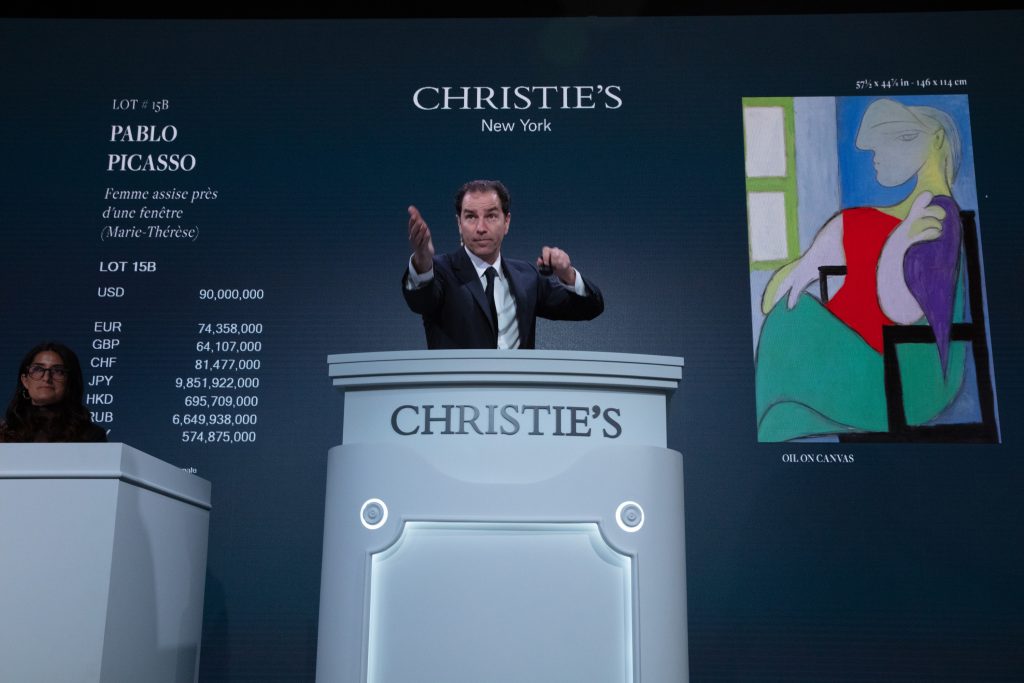Three things in life are certain: death, taxes, and Picasso being the top-selling artist at auction worldwide.
The prolific Cubist—whose works have sold for $353.9 million at public sales thus far this year—has long maintained pole position as the most lucrative artist at auction. Look beyond Picasso, however, and you’ll see that the upper ranks of the market are shifting.
Often, that has as much to do with the availability of good material as by any particular shift in taste. One or two major lots from an estate can be enough to vault a particular painter or sculptor into a top 10 position as one of the best-selling artists at auction. Monet is a good example: only seven of his works hit the block so far this year, but they happen to have been heavyweights that earned him fourth place, with $131.6 million in art sold from January through July. (For this article, we examined total sales at auction recorded by the Artnet Price Database from January 1 to July 31.)
Other top-selling artists are propelled by volume as much as the value of individual works. Banksy’s top auction price so far this year—$23.1 million for Game Changer, which was sold to benefit the U.K.’s National Health Service—was a relatively small fraction of his total haul. Cumulatively, his 677 lots delivered $125.4 million, putting him in fourth place.
So who are the top earners this year thus far?
- Pablo Picasso: $353,881,105
- Jean-Michel Basquiat: $304,380,831
- Andy Warhol: $154,051,449
- Claude Monet: $131,633,070
- Banksy: $125,370,068
(Sidenote: If you’re wondering where the women are in this top five, the answer is nowhere. The first woman to appear on the list of top-selling artists in 2021 to date is Yayoi Kusama, who comes in at number 11, with $81.7 million in total sales.)
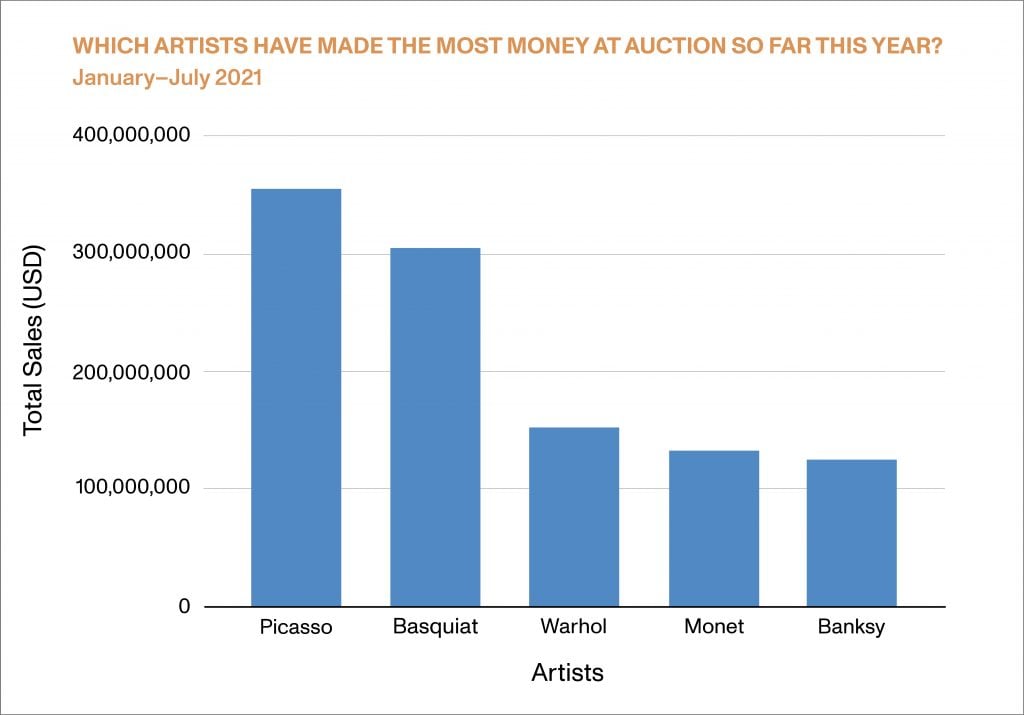
© Artnet Price Database and Artnet Analytics 2021.
For a deeper look at who’s up, who’s down, and what the rankings tell us about the direction of the market, read on for a more detailed analysis.
Pablo Picasso
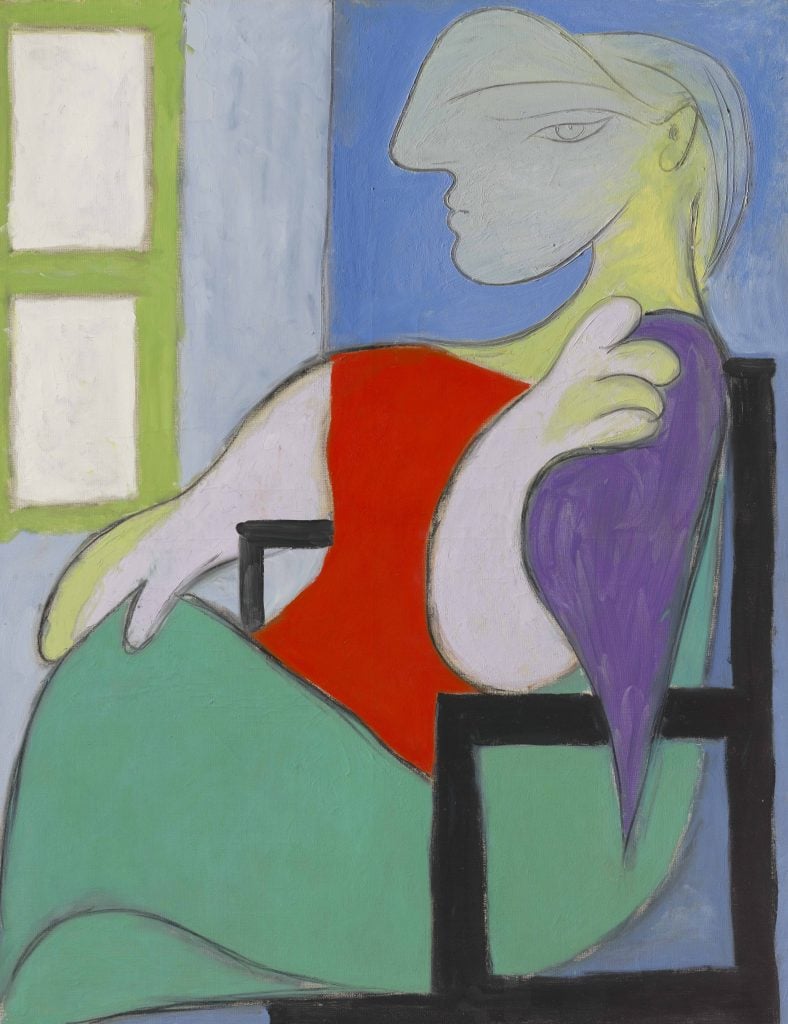
Pablo Picasso, Femme assise près d’une fenêtre (Marie-Thérèse) (1932). Courtesy of Christie’s Images, Ltd.
On paper, Picasso’s presence on this list might seem as boring to you as golf is to me. He’s always top of the class—what else is there to say? But in fact, the fluctuation of the volume and total sales of his work at auction echoes how the art market has evolved over the past few years.
Just like the broader market, Picasso’s total sales plummeted in the first half of 2020 as the auction calendar fell into disarray and buyers speculated on younger artists selling works for lower price points online. The average price of a Picasso—$137,940 at this point in 2019—fell 51 percent, to $67,828, in 2020.
As the tide turned this year, however, bigger-ticket items began hitting the block, bringing total sales—for both Picasso and the market at large—above 2019 levels. To date in 2021, four Picassos have sold for over $20 million each, including one, a portrait of Marie-Thérèse Walter, that exceeded $100 million. These trophies have also driven up Picasso’s average price, which comes in at $230,541 so far this year—earning him, yet again, a place at the top of the list.
Banksy
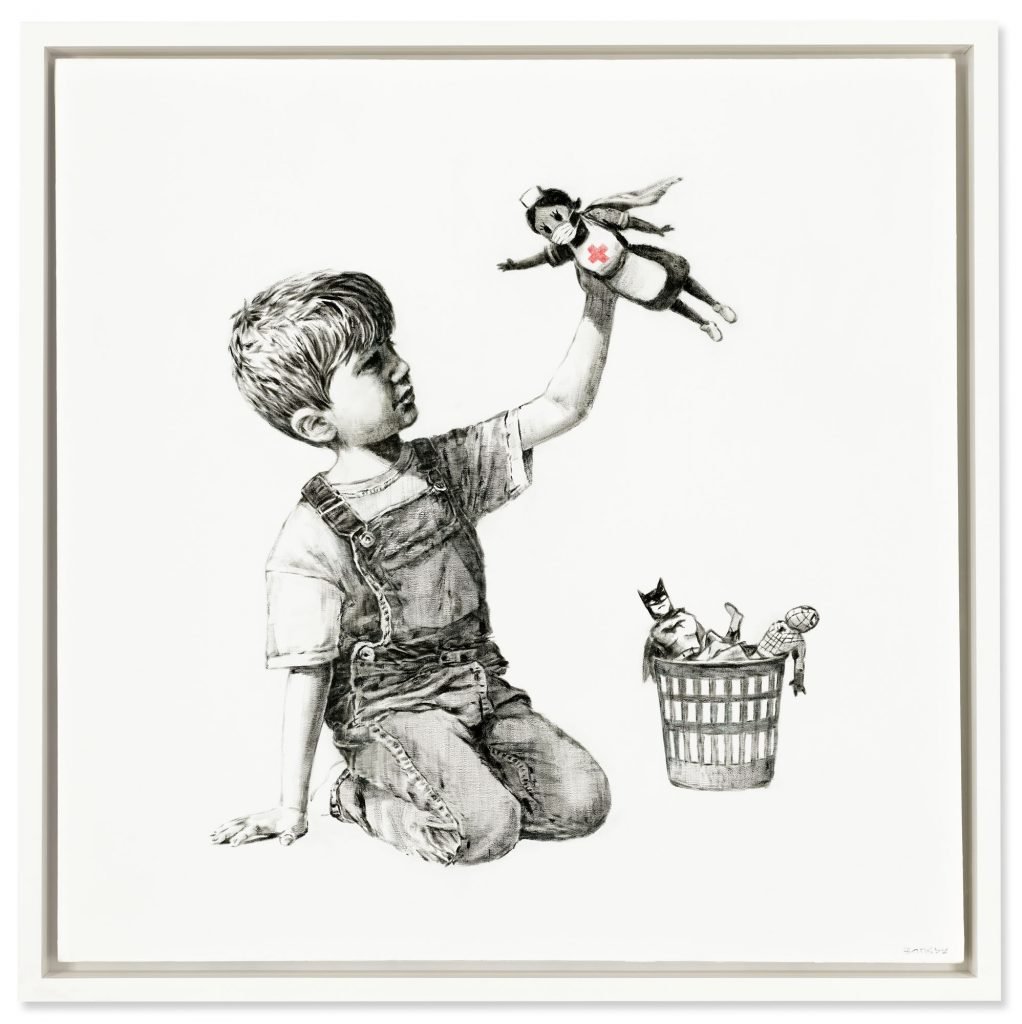
Banksy, Game Changer (2020). Courtesy of Christie’s Images, Ltd.
Picasso’s trajectory follows that of the broader market; Banksy’s, on the other hand, has ripped away from the trend line and taken off for outer space. Try this on for size: between 2004 (the first year his art came up for auction) and 2020, Banksy’s work generated a combined total of $184.7 million. In the first seven months of this year alone, it’s made $125.5 million (!).
This year also marks the first time the artist has cracked the top five sellers at auction; at this point in 2020, he was ranked 42. Between then and now, his total sales have ballooned almost 80 percent, to $125.4 million, putting him between Monet and the late Chinese-French painter Zao Wou-Ki. His success has been driven by a dramatic increase in the volume of his works at auction (it’s spiked almost 320 percent over the past five years), as well as an increase in the value of his work (his average price has grown 675 percent since 2016).
Consider it a feedback loop: As demand for Banksy rises, auction houses organize more and more sales of his work, which seems, so far at least, only to fuel more demand. While an artist like Monet doesn’t have enough material available to enable this kind of glut, Banksy has a robust secondary market for his prints, as well as for his harder-to-come-by paintings. In fact, I hate to break it to you, but he could be heading for the kind of art-market omnipresence we currently associate with Picasso or Warhol. Just accept it!
Jean-Michel Basquiat
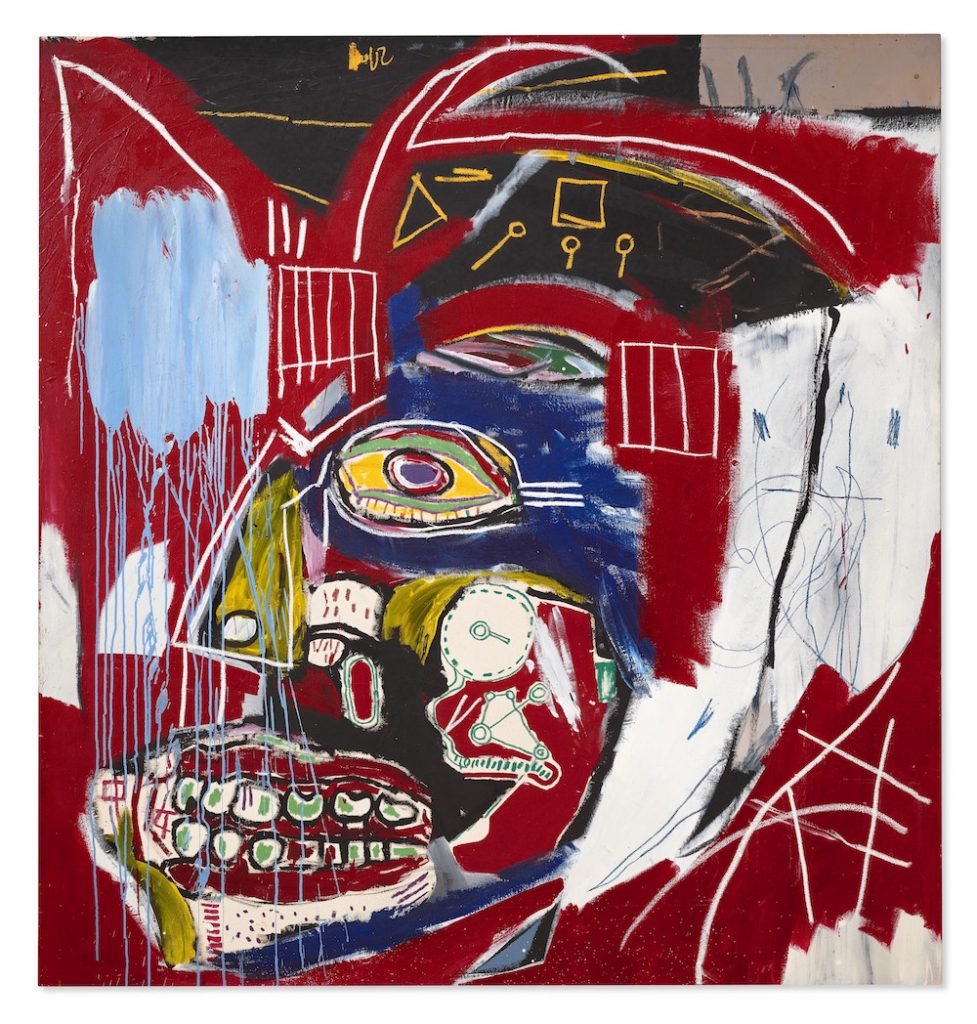
Jean-Michel Basquiat, In This Case (1983). Image courtesy Christie’s Images Ltd.
Some online commenters were scandalized to see Basquiat’s work presented alongside a Tiffany necklace in the company’s latest ad. They must not have noticed that billionaires routinely compete for the artist’s work at auction, pushing his paintings up to eight-figure sums in less time than it takes to microwave popcorn.
If any artist has been thoroughly co-opted as a status symbol for the wealthy, it’s Basquiat. So far this year, his pieces have generated $304.4 million at auction, making him the second-best-selling artist behind Picasso. This growth has been driven primarily by the sale of a handful of high-priced trophies: five works by the artist have sold for more than $20 million at auction in 2021, including one—the deep red skull painting In This Case—for $93.1 million. As a matter of fact, 10 fewer works by the artist sold at auction this year than in the equivalent period in 2019. Yet Basquiat’s total sales have increased 360 percent in the same period.
*
O.K., now we’ve talked about some of the top sellers. Now, let’s shift our focus to a few artists who have fallen in the rankings… .
KAWS
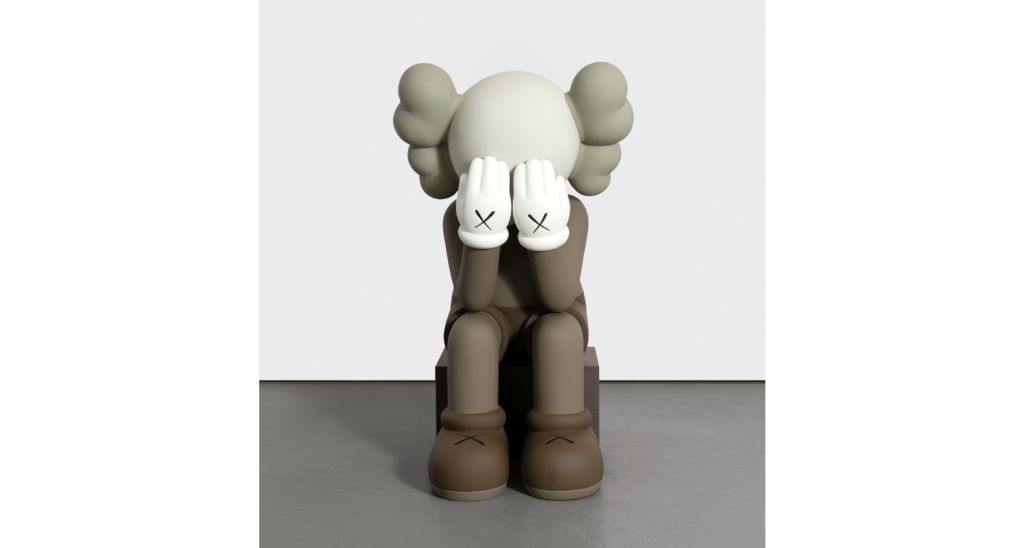
KAWS, COMPANION (PASSING THROUGH) (2011). Courtesy of Phillips.
At this point in 2019, KAWS’s auction sales actually exceeded those of Jean-Michel Basquiat. How times have changed.
To date this year, the street artist-turned-market darling has generated $17.2 million at auction, down 76.6 percent from the peak of KAWS-mania two years ago. Currently the subject of a blockbuster retrospective at the Brooklyn Museum, KAWS continues to be a frequent presence at public sales: 690 of his works have hit the block this year, 13 more than Banksy. And like Banksy, KAWS has a robust print market, as well as a strong collector base for his toys and editioned sculptures.
But the American artist’s top price in 2021 is much lower than Banksy’s: $1.5 million for a 2013 painting of a blob, which sold at Poly International Auction in Beijing in June.
Christopher Wool
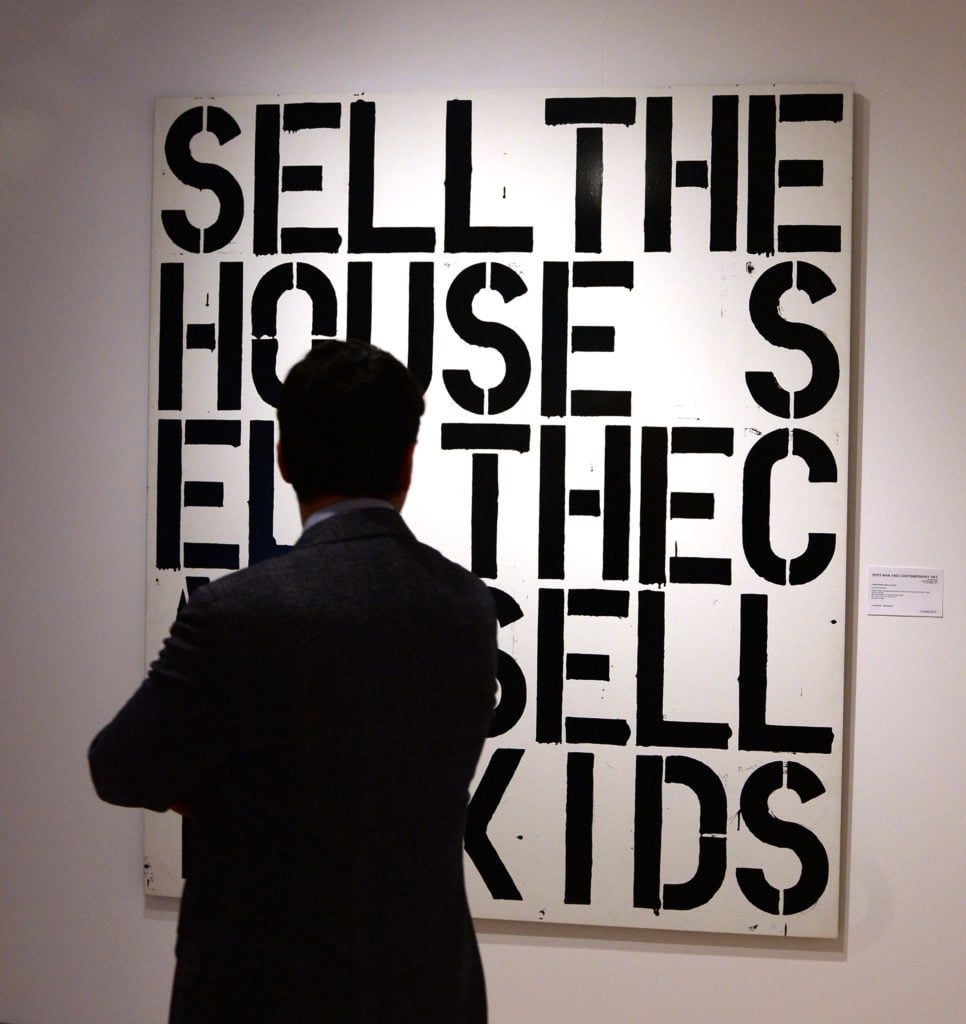
Christopher Wool’s Apocolypse Now at Christie’s. (Photo by rune hellestad/Corbis via Getty Images)
Whatever happened to Wool’s market? Like KAWS, he has seen his total auction sales tumble not due to a reduction in volume, but due to a dip in high-priced works.
More lots by the artist hit the block in the first seven months of this year than in either 2019 or 2020, but his total sales have shrunk. So far in 2021, Wool’s work has generated $7.3 million at auction—that’s down almost 80 percent from the equivalent period in 2019.
The priciest painting by the artist to hit the block this year is an enamel 1992 text painting that reads “Hole in Your Head.” It fetched $3.5 million with premium, barely hitting the low estimate (which does not include fees). This is particularly surprising considering Wool’s text works from the ‘90s are arguably the most sought-after part of his oeuvre. In 2019, the (admittedly more famous) painting emblazoned with the word “Fool” fetched $14 million. Wool’s auction record for a single work, nearly $30 million, set in 2015, is significantly higher than both of those more recent sales combined.
